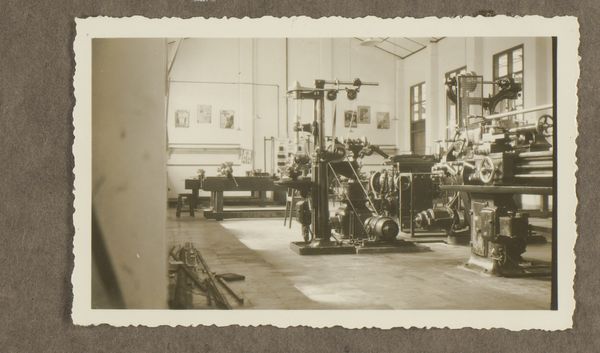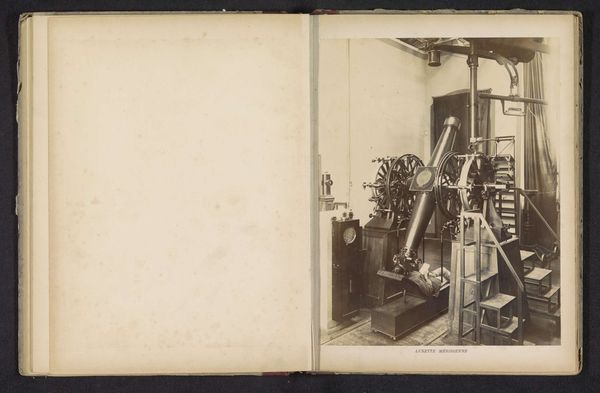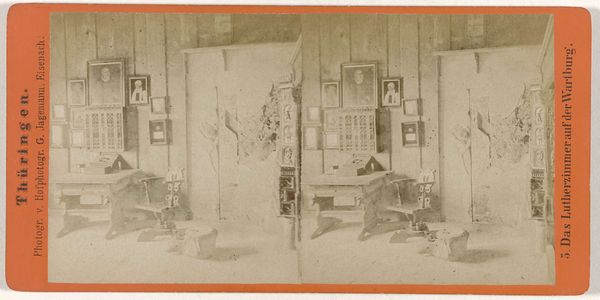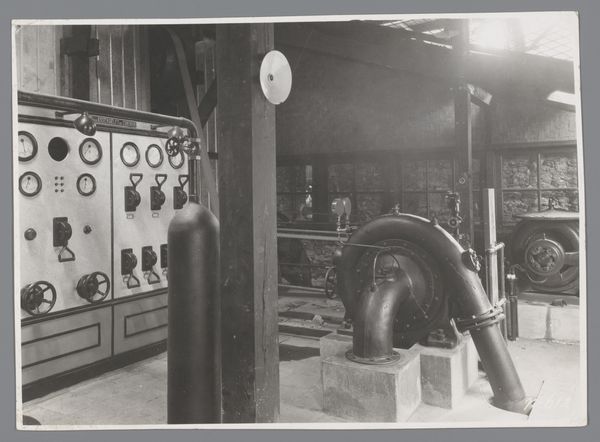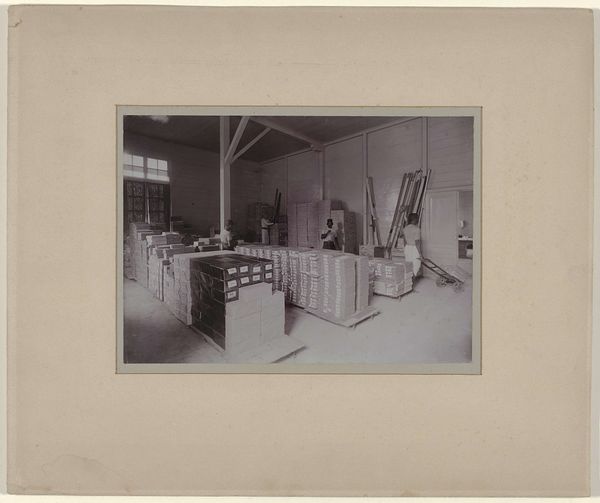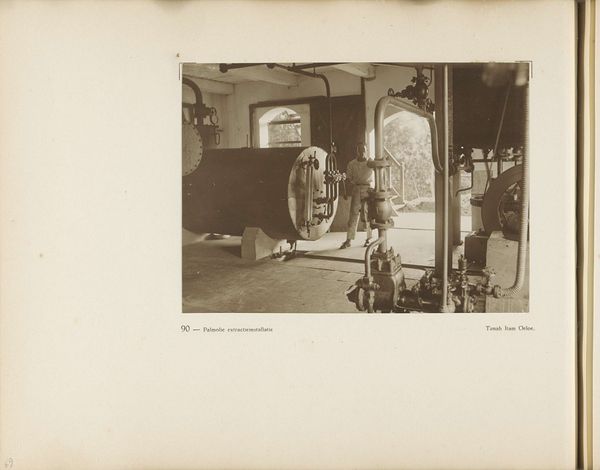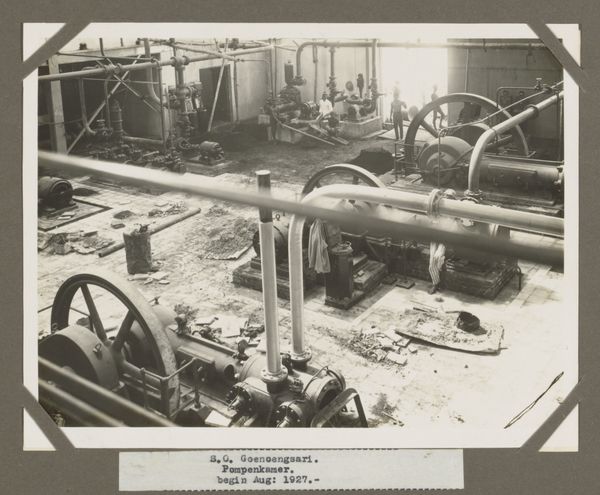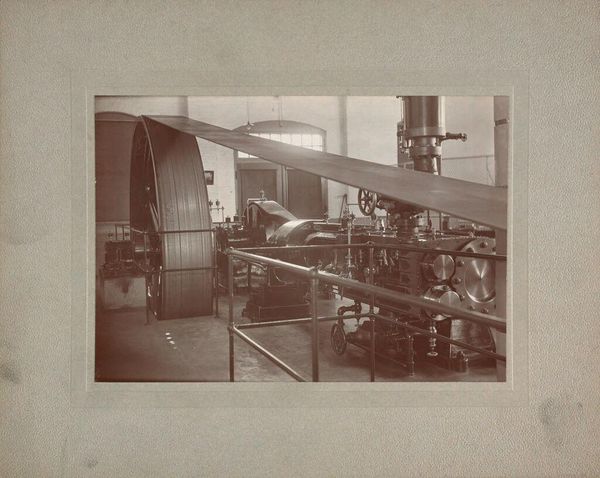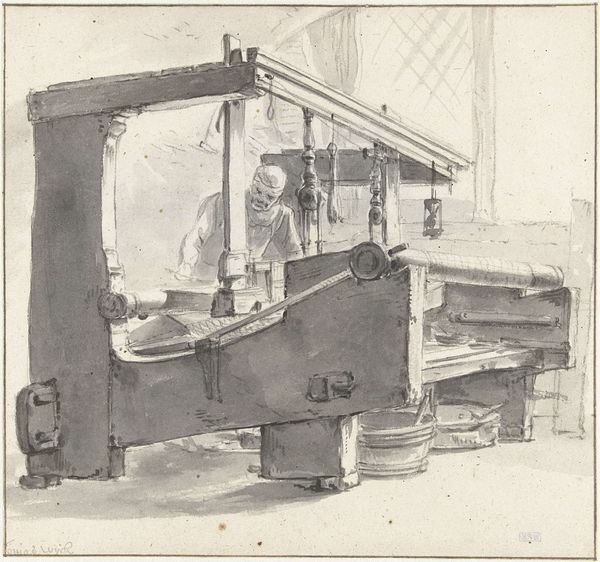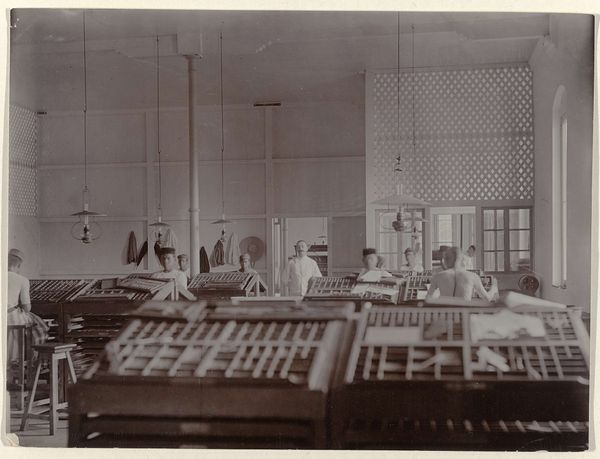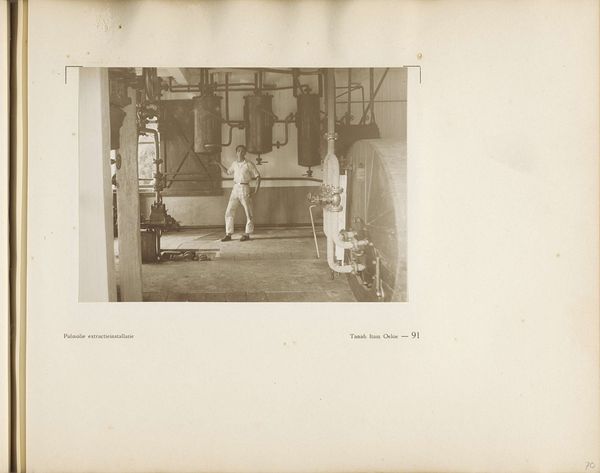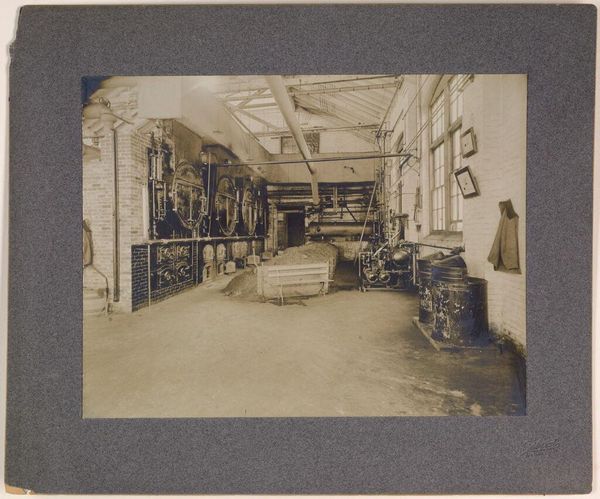
print, photography
#
still-life-photography
# print
#
photography
#
realism
Dimensions: height 212 mm, width 293 mm
Copyright: Rijks Museum: Open Domain
Editor: Here we have an early photograph, “Machinekamer van de drukkerij van de Deli Courant,” possibly taken between 1908 and 1910. It’s a shot of the machine room for the Deli Courant printing press, all steel and moving parts, two workers standing alongside their respective machinery. I'm curious about the men operating these massive machines. What do you see in this piece? Curator: What strikes me is the stark contrast between the mechanical modernity and the implicit social structures it reveals. The Deli Courant was a Dutch-language newspaper in Sumatra. We must consider this image within the context of Dutch colonialism, where technology and information dissemination were tools of power. Who owned the newspaper? Who benefited from it? Who is visible, and what are they allowed to do within this colonial system? Editor: So you’re suggesting the photograph isn’t just a neutral depiction of technology but reflects power dynamics? Curator: Exactly. Look at the composition. The machines are the focal point, looming large, almost anthropomorphic. The men, likely Indonesian laborers, are positioned as secondary, operating within this technological regime imposed by colonial power. What does it mean to be a body laboring within someone else’s technology and within someone else’s means of communication and control? The “still life” becomes an interrogation. How do the subjects reflect both oppression and ingenuity when these intersect in a colonial territory? Editor: That shifts my perspective completely. I was focused on the industrial aesthetic. I didn't think about the individuals' placement and agency. Curator: Precisely. The photograph then becomes a document that allows us to excavate layers of colonial history, labor, and the uneven distribution of technological progress. We’re prompted to ask whose stories are amplified, and whose are silenced, or co-opted? Editor: It's eye-opening to consider the social implications embedded within what initially seemed like a straightforward industrial scene. Thanks, I see so much more in this photo now! Curator: Indeed. By analyzing the visual representation of technology and labor within a colonial framework, we can begin to understand the complex and often exploitative dynamics that shaped societies at the time, and continue to reverberate today.
Comments
No comments
Be the first to comment and join the conversation on the ultimate creative platform.
